Potassium (K) is a building block of some of the most widespread minerals, but despite that it is actually surprisingly rare in the whole Earth. It can be even said that potassium is a trace elment — it forms only 160 ppm1 (0.16%) of the bulk Earth. How is it possible? It is an important constituent of K-feldspar and mica and these are among the main components of granite — a rock type we are all very familiar with.

Micas are platy silicate potassium-rich minerals. Brown is biotite, greenish gray is muscovite.
Yes, granite is a common rock and potassium is abundant there. But granite is especially abundant in the upper continental crust. It forms laterally spread intrusions (batholiths) that are shaped like pancakes. They may form extensive outcrops, but they are confined to the upper parts of the continental crust. Potassium is a major constituent of the upper continental crust, it forms 2.80 weight percent of it. This is very much when compared with the lower continental crust and primitive mantle (0.24%)2.
It is therefore highly incompatible chemical element in the mantle rocks. Potassium is among the first ones to escape from the mantle to the crust if an opportunity presents itself. It happens when rocks start to melt. basalt that forms when the mantle rock peridotite partially melts contains much more potassium than peridotite itself (0.88 and 0.24%, respectively)3. But it is incompatible in basalt as well and leaves it as soon as possible (when basalt melts). And so it goes until very evolved rocks like granite form that contain significant amounts of potassium that is gathered from tens of times larger volumes of molten peridotite.
Potassium belongs to the alkali metals group. Other geologically significant metals in this group are sodium and lithium. These elements are very reactive because they contain only one outermost electron. They are therefore always on the lookout for potential partners. We will never find uncombined potassium in nature because of that. Potassium tends to form ionic compounds. Potassium and sodium are very similar to each other chemically and their behaviour in geological materials is analogous as well.
It has three natural isotopes with mass numbers 39 (isotopic abundance 93.26%), 40 (0.012%), and 41 (6.73%). Isotope with a mass number 40 is radioactive. Hence, common minerals like mica and K-feldspar are weakly radioactive too. This is not life-threatening because the concentration is low, but it has geological consequences. Radioactive decay is an important source of Earth’s internal heat. Because the concentration of potassium is so much higher in the continental crust than in the mantle, the geothermal gradient and heat production is also higher there. It is not the only heat-producing element, but other heat-producers (uranium and thorium) are also highly incompatible in the mantle and therefore gather in the continental crust just as potassium does.
Potassium readily dissolves in water during weathering of potassium-bearing minerals and enters the hydrosphere for a long time. It goes relatively easily into the water, but it is not that easy to take it back. It is not technically complicated. All it takes is to vaporise the water until potassium precipitates out of it as evaporite mineral sylvite (KCl), but very high rate of evaporation (near total) is needed for that to occur. Therefore, potassium tends to stay in the hydrosphere for a long time — about 11 million years as an average.
Important K-bearing rock-forming minerals are K-feldspars (orthoclase, microcline, sanidine), micas (biotite, muscovite), nepheline, leucite, glauconite, illite, sylvite, and some amphiboles.
Common rock types that may contain significant amounts of potassium are granite, pumice, obsidian, gneiss, pegmatite, greisen, schist, hornfels, slate, shale, arkose, syenite, rock salt, rhyolite, and trachyte.
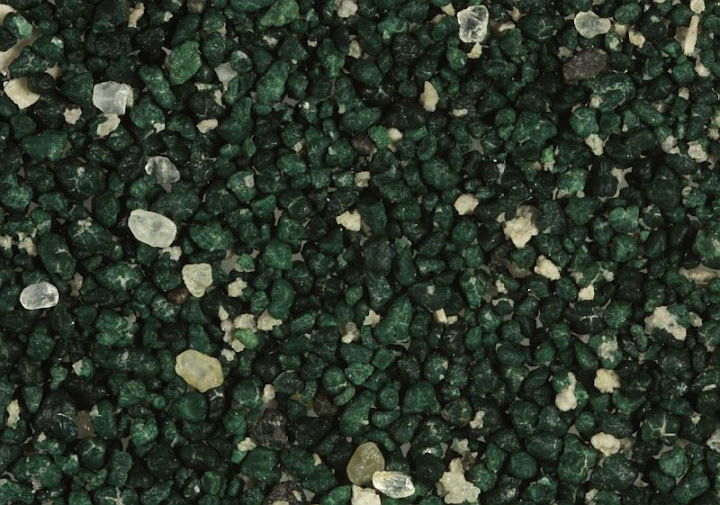
Glauconite pellets in marine sand from France. Width of view 6.5 mm.

Clay minerals are similar to micas and one of them (illite) contains potassium. The picture is taken in a clay quarry in Estonia.

Some gneissic rocks are compositionally very similar to granite and therefore contain lots of potassium. Pink mineral is K-feldspar. Width of sample 11 cm.
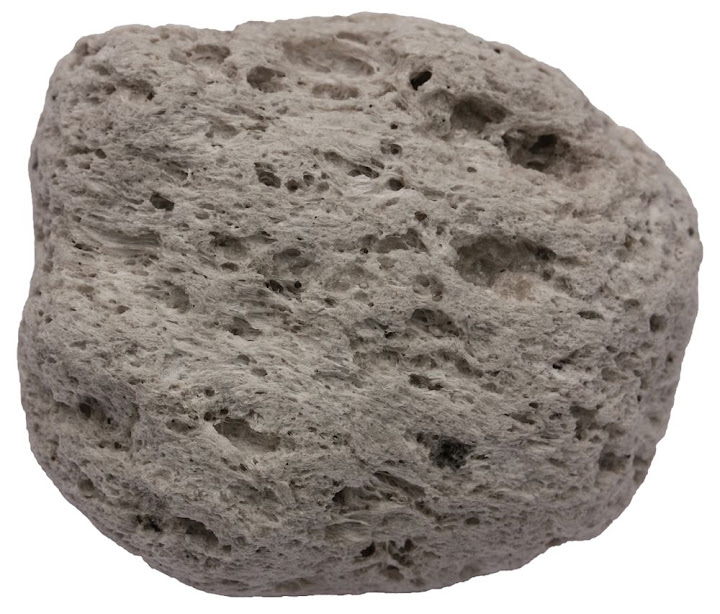
Pumice is a frothy lava that is often compositionally close to granite and therefore contains lots of potassium. This piece of pumice from Santorini was thrown out of a volcano approximately 3600 years ago during the Minoan eruption. Width of sample 40 mm.
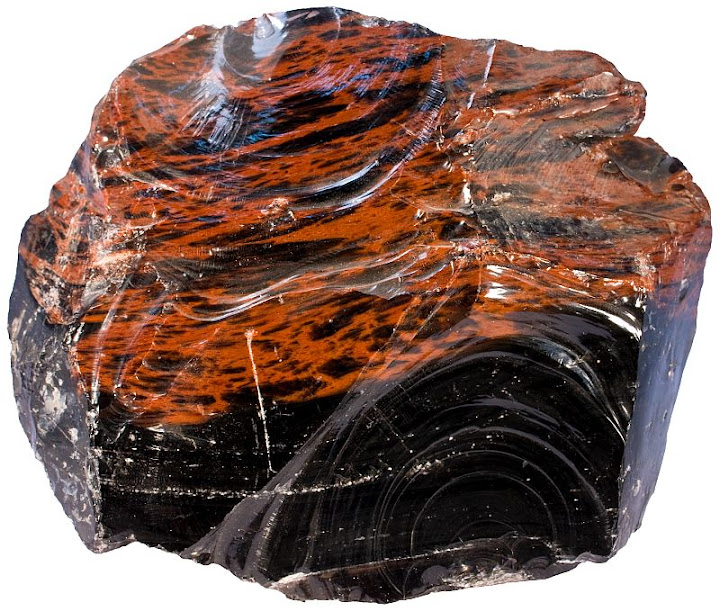
Obsidian is a glassy volcanic rock. It is also frequently felsic in composition. This sample demonstrates beautiful conchoidal fracture. Width of sample 11 cm.
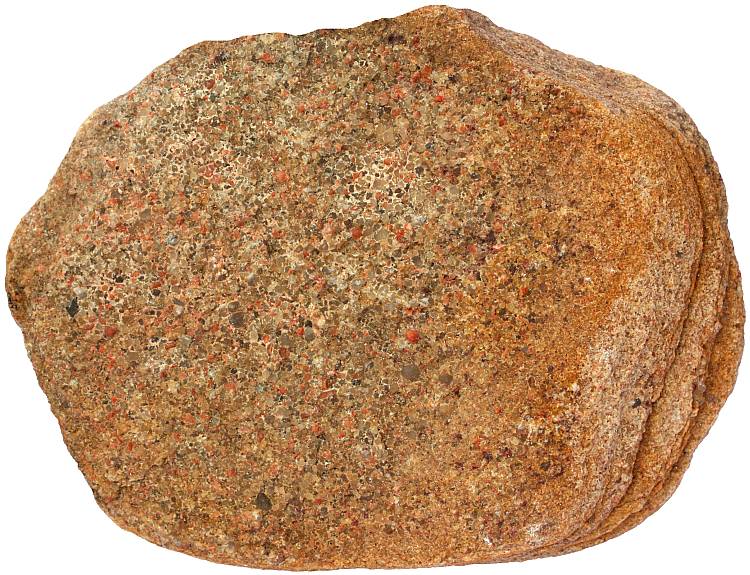
Arkose is feldspar-rich sandstone. Feldspar in arkose is usually K-feldspar. The width of the sample from Estonia is 15 cm.

sand is usually composed of quartz but not exclusively. Most sand samples contain few percents of feldspar (mostly K-feldspar). Here is a feldspar-rich sand sample from Saint Pierre and Miquelon (French island near the coast of Newfoundland). Width of view 10 mm.
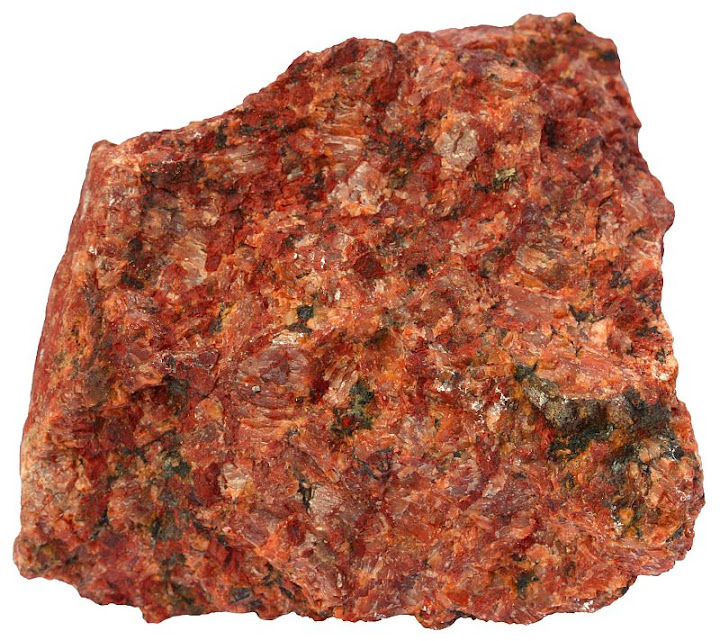
Syenite is an igneous rock that resembles granite, but it contains less quartz and more K-feldspar. Hence, syenite contains even more potassium than granite. The width of the sample from Estonia is 8 cm.
References
1. McDonough, William F. (1999). Earth’s core. In: Encyclopedia of Geochemistry (Encyclopedia of Earth Sciences Series) (Ed. Marshall, Clare P. & Fairbridge, Rhodes W.). Springer. 151-155.
2. McLennan, Scott M. & Taylor, Stuart R. (1999). Earth’s continental crust. In: Encyclopedia of Geochemistry (Encyclopedia of Earth Sciences Series) (Ed. Marshall, Clare P. & Fairbridge, Rhodes W.). Springer. 145-151.
3. Mittlefehldt, David M. (1999). Potassium. In: Encyclopedia of Geochemistry (Encyclopedia of Earth Sciences Series) (Ed. Marshall, Clare P. & Fairbridge, Rhodes W.). Springer. 522.
Leave a Reply